Charming London mews property for sale
Once handy for horses, coaches and servants, mews houses now offer some of the most charming homes in London, finds Eleanor Doughty.
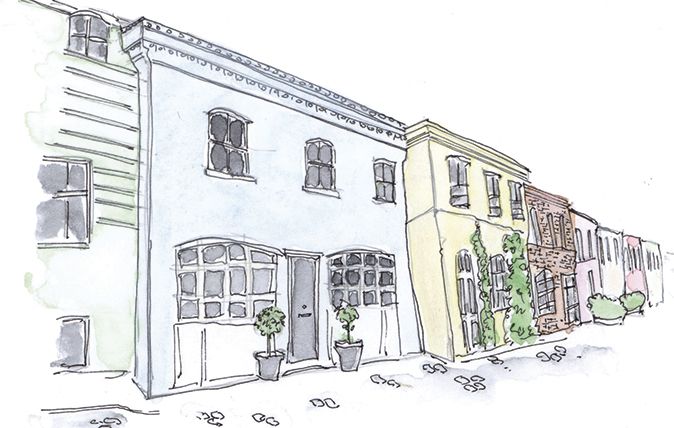

Take a turn off one of London’s smartest streets and you might find yourself staring down a cobbled drive edged with cars, an occasional picnic table stacked at the side and loops of hydrangeas wound around a great stone arch. The centre of London has more than 300 mews, often well hidden and each with its own character and village atmosphere.
However, the mews was not always such a rarefied species. First built in the 17th and 18th centuries around the back of grand terraced houses, they were quiet spots for storing horses, coaches and servants. The name ‘mews’ derives from the Royal Mews, the stables on the spot we now call Trafalgar Square. This in turn dates from the original use of the building—not for keeping horses, but the king’s falcons, during the moulting process; ‘mews’ is from the French muer, ‘to change’.
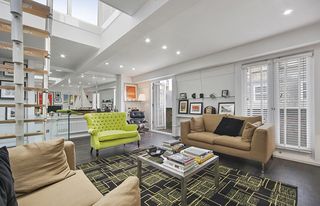
By the beginning of the 20th century, the invention of the motorcar and a servant shortage caused by the First World War reduced the need for a mews. The Swinging Sixties saved London’s best, when a handful of racing-car drivers identified these unassuming streets as the perfect spots for keeping their cars safe.
One was rally driver Antoine Lurot, founder of specialist mews estate agent Lurot Brand (020–7479 1999; www.lurotbrand.co.uk). Lurot’s mews directory comprises 344 London streets— not all of which have mews in the name. Adam’s Row in Mayfair, between Berkeley Square and Grosvenor Square, is a street of large gabled coach houses; Campden House Close, a cul-de-sac with a spacious courtyard, off Hornton Street in Kensington, is tucked between Holland Park and Kensington Gardens. Others are in quieter village areas, such as Fairfax Place in South Hampstead or Eton Garages in Belsize Park.
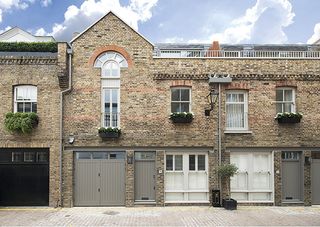
In defining a mews, ‘pedants say that the house has got to have had a horse living in it,’ notes Duncan Petrie, head of mews sales at Savills (020–3430 6605; www.savills.co.uk). In Belgravia and Knightsbridge, history is coming full circle. ‘Some of the mews houses are being reattached to the main houses. Margaret Thatcher’s house in Chester Square has got a mews property behind it,’ he adds.
For most mews residents, however, their two- or three-bedroom properties don’t come with a town house in tow. Nevertheless, they know that they’re part of an exclusive club. Simona Tappi lives with her husband and two children in Craven Hill Mews, near Paddington. ‘It’s incredibly welcoming, safe and quiet. There’s no traffic and we’re very hidden away,’ she discloses. Her mews, a cobbled cul-de-sac, is approached through an entrance under a building on Devonshire Terrace and has 26 residential properties on it.
Residents aver that the difference between living in a mews and just about anywhere else in central London is the sense of neighbourhood. ‘This summer, our friends, who have lived in a mews for about 20 years, organised a little street party. We all took some food and had bunting up,’ adds Mrs Tappi. ‘We’re a five-minute walk from Hyde Park and it’s rare to find somewhere in that location with such a homely feel to it.’
Sign up for the Country Life Newsletter
Exquisite houses, the beauty of Nature, and how to get the most from your life, straight to your inbox.
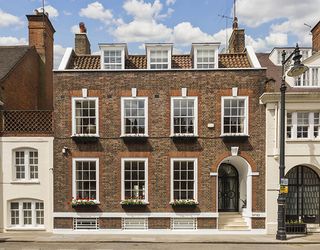
Lurot Brand’s James Robinson has identified a group of Londoners he calls ‘mewsophiles’. ‘People collect them,’ he laughs. ‘Families that move to the country from London because they’ve got kids and want horses inevitably want to keep something in town. You can just lock up and leave a mews house.’
Despite considerable uptake by developers, basement building is infra dig in the mews community. John Rushton has lived in Bathurst Mews, near Paddington, for 40 years and there are currently eight basements being dug on this 80-house mews. They’re unpopular, ‘not least because of the huge trucks delivering building materials all the time and ripping BT wires off the walls’.
Mr Rushton believes the street is ‘more international now, with younger couples—those who aspire to senior management in the City. As soon as they have children, they disappear. When I first moved here, the residents were British and people had proper jobs’.
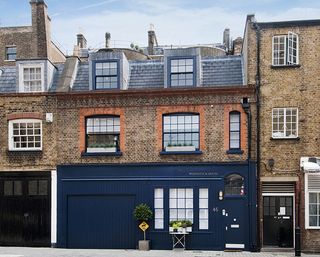
The one thing that hasn’t changed on Bathurst Mews is its equine population. It’s the last London mews with horses—Ross Nye Stables is located at No 8 and Hyde Park Stables at 63.
Mr Robinson singles out Pont Street Mews, a stone’s throw from Harrods, and Kynance Mews—‘it’s just achingly pretty’—as being arguably the smartest. He adds: ‘Every five minutes, someone stops and takes a photograph of Ladbroke Walk in Holland Park.’
The most valuable asset that all share is peace—birds, rather than traffic, will wake you. ‘The big houses bat the noise away, so the mews are silent,’ Mr Robinson explains. ‘You could be in a village, yet you walk around the corner and you’re in the middle of town. Mews are the few places in London where it’s impossible not to say hello to the person walking the other way. I say, if you want a slice of the country, get a mews house.’
Something to mews on
- Most mews houses had a tunnel under the garden that connected with the basement of the house they serviced, so that servants could slip in and out without being noticed
- The majority were originally built without windows at the back, to avoid the peeking eyes of servants
- There are more mews in the City of Westminster (195) than any other London borough
- London’s longest mews is Pavilion Road, Chelsea, at just over 900 yards
- Bruce Reynolds is said to have planned the Great Train Robbery in a pub in Belgrave Mews West, Knightsbridge
Country Life is unlike any other magazine: the only glossy weekly on the newsstand and the only magazine that has been guest-edited by HRH The King not once, but twice. It is a celebration of modern rural life and all its diverse joys and pleasures — that was first published in Queen Victoria's Diamond Jubilee year. Our eclectic mixture of witty and informative content — from the most up-to-date property news and commentary and a coveted glimpse inside some of the UK's best houses and gardens, to gardening, the arts and interior design, written by experts in their field — still cannot be found in print or online, anywhere else.
-
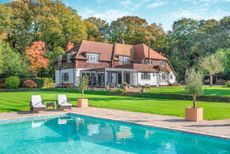 A well-connected rural playground with 23 acres on the edge of the South Downs National Park
A well-connected rural playground with 23 acres on the edge of the South Downs National ParkOld House Farm is an impressive family home with a wealth of amenities that would inspire any rural passion.
By Arabella Youens Published
-
 The UK gets its first ‘European stork village’ — and it's in West Sussex
The UK gets its first ‘European stork village’ — and it's in West SussexAlthough the mortality rate among white storks can be up to 90%, the future looks rosy for breeding pairs in southern England.
By Rosie Paterson Published

